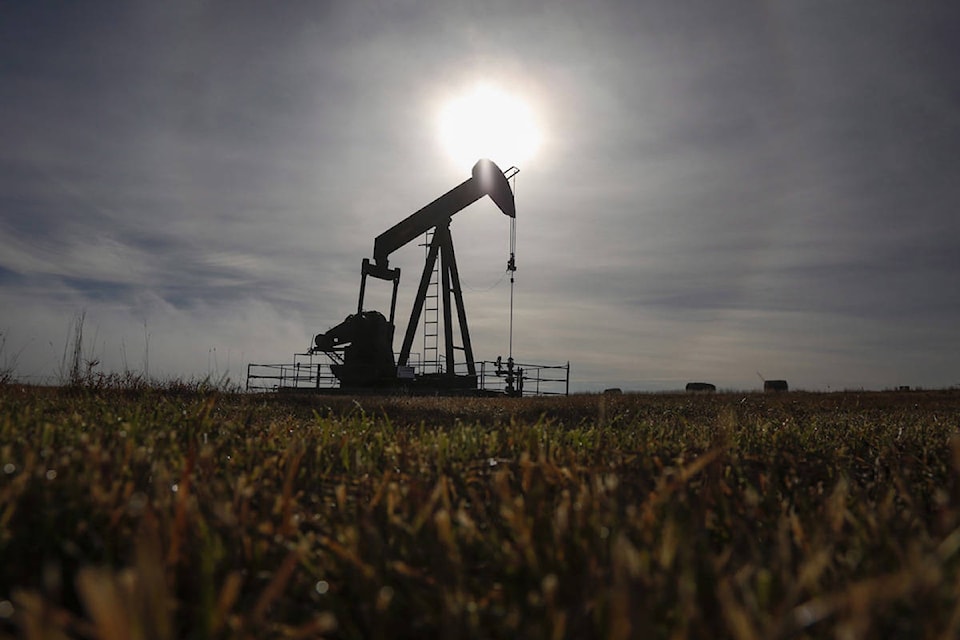Canada’s $1.6-billion bailout for Alberta’s battered oil industry is well underway, but with little transparency about who is getting the money and for what.
Almost $1 billion of the package of loans, guarantees and government grants announced last December is in the hands of companies, but details are available for just a small fraction of the spending and the industry says it has not helped much.
The package is rolling out as pressure mounts on Canada to fulfil its promise to end all subsidies to fossil-fuel producers, and as European banks flee the sector altogether.
Sweden’s central bank said Wednesday it had sold its Alberta-government issued bonds because it will no longer invest in assets held by governments or companies with large climate footprints. A day later, the European Investment Bank, the non-profit lending institution of the European Union, announced it will not invest in fossil-fuel projects after 2021.
Both decisions followed a warning from Norway’s central bank on Nov. 5 that climate risk must be considered in all assessments before investments are made.
Canada’s energy industry is reeling from the departure of massive amounts of capital, with $30 billion divested in the last three years, even as global demand for oil is forecast to grow. The International Energy Agency said this week that global demand will grow by about one million barrels a day over the next five years, but plateau by 2030 as the use of more efficient vehicles and electric cars begins to take hold.
Both the Canadian Association of Petroleum Producers and the Alberta government said this week investors need to know that Canadian oil and gas are produced more sustainably and with tougher environmental standards than similar products almost anywhere else in the world, and remain a good investment.
What might be most concerning to Canada’s energy workers and the economy as a whole is that natural gas is also on the Europeans’ chopping block. Liquefied natural gas, which produces fewer emissions than coal when burned for electricity, has been held up as an alternative fuel and Canada is responsible for more than one-third of new global gas projects now in development.
Nicholas Browne, a research director at Wood Mackenzie, a United Kingdom-based global energy consultancy group, said Friday the European bank’s decision puts natural gas on the climate hot seat beside oil.
“The EIB’s new financing criteria will make lending to gas projects very difficult,” he said in a written statement.
Climate activists, however, want Canadian investors to use their money to promote clean growth at the further expense of fossil fuels. James Rowe, a professor of political ecology at the University of Victoria, said Canada’s lenders have been much slower to move against traditional petroleum companies than European ones.
He said while European investors believe they see the writing on the wall for fossil fuels and are walking away before they are left holding stranded assets, Canadian lenders, investment firms and pension funds are taking a lot more risk.
The Liberals unveiled the $1.6-billion aid package in December 2018 as the price of oil bottomed out amid ongoing struggles to get Canadian products to market through clogged channels.
Ben Brunnen, vice president of oilsands, fiscal and economic policy for the Canadian Association of Petroleum Producers, said Friday the funding was appreciated but ”hasn’t had a meaningful impact” to solve the biggest issue of long and complex review processes for new pipelines, and political interference in planning.
“It’s worth noting that the industry did not ask for funding as a way to solve challenges,” he said. ”We asked for collaboration and support in an approach that positions the industry as the preferred fuel choice, one that can supply the world with cleaner and more regulated energy, as well as to prioritize the competitiveness of the industry to support the Canadian economy.”
There is not a lot of information from the government about where the money has gone.
Natural Resources Canada doled out $37 million of a $50-million commitment under its Clean Growth Program for nine projects that help oil and gas companies reduce their carbon footprints.
Innovation, Science and Economic Development Canada announced $49 million each for two projects to help Alberta companies building facilities to turn propane into polypropylene, a type of plastic not currently produced in Canada but used often in packaging and labels.
A spokesperson for the Business Development Bank of Canada said 892 loans totalling $207.5 million have been approved out of its $500-million commercial loan allotment in the aid package. BDC provided no details about any of them.
Export Development Canada’s $1-billion package has lent or guaranteed $629 million to 37 companies, though the agency’s website does not distinguish which loans went through this program. Some company websites do mention transactions, including natural-gas company Painted Pony Energy Ltd., which reported receiving a $25-million credit facility in May.
EDC last January announced it will no longer provide financing for projects involving coal, but will continue to aid oil and gas firms. Spokeswoman Amy Minsky said Friday that supporting customers to adapt to a low-carbon economy is a priority for the agency, including helping them partner with clean-tech companies that provide gear and expertise to lower emissions.
She also said EDC is collecting data about emissions and management of carbon footprints for its customers and to inform decisions.
The Bank of Canada earlier this year included climate risk in its annual financial-system review for the first time, with a promise to start a multi-year research program to better understand the risks climate change poses to the economy and banking system.
Mia Rabson, The Canadian Press
